Potrebujeme váš súhlas na využitie jednotlivých dát, aby sa vám okrem iného mohli ukazovať informácie týkajúce sa vašich záujmov. Súhlas udelíte kliknutím na tlačidlo „OK“.
ASTM E1424-91(2008)
Standard Test Method for Determining the Rate of Air Leakage Through Exterior Windows, Curtain Walls, and Doors Under Specified Pressure and Temperature Differences Across the Specimen
Automaticky preložený názov:
Štandardná skúšobná metóda na stanovenie miery Air presakovaniu Vonkajšie Windows, obvodových plášťov, a dvere za presne stanovených tlak a teplota rozdiely medzi ktorého vzor sa
NORMA vydaná dňa 1.9.2008
Informácie o norme:
Označenie normy: ASTM E1424-91(2008)
Poznámka: NEPLATNÁ
Dátum vydania normy: 1.9.2008
Kód tovaru: NS-41718
Počet strán: 7
Približná hmotnosť: 21 g (0.05 libier)
Krajina: Americká technická norma
Kategória: Technické normy ASTM
Kategórie - podobné normy:
Anotácia textu normy ASTM E1424-91(2008) :
Keywords:
air leakage, curtain walls, differential temperature, doors, fenestration, energy analysis, laboratory method, static pressure chamber, test method, testing, windows, Air leakage testing--building materials/constructions, Building envelopes, Curtain walls, Differential temperature, Doors/door assemblies, Energy analysis, Exterior doors, Exterior windows, Windows/window assemblies, ICS Number Code 91.060.50 (Doors and windows)
Doplňujúce informácie
| Significance and Use | ||||||
|
The exterior building envelope and its components (for example, windows and doors) separate the interior conditioned spaces from exterior environmental factors such as heat, cold, rain, wind, noise dust, etc. Building materials and components can expand or contract to varying degrees, depending on seasonal and diurnal exterior ambient air temperatures. Fluctuations in the ambient air temperatures can alter the sealing characteristics of windows, curtain walls, and doors by changing weather seal compression ratios. Thermal expansion or contraction of framing materials coupled with thermal blowing due to temperature gradients through the product, and alterations in the effective leakage areas due to weather seal shrinkage and compression set, can also significantly alter the air leakage rates of these products in field service applications. Air leakage tests performed using Test Method E 283 (a laboratory air leakage test performed at ambient temperature conditions) will not account accurately for changes in air leakage rates that may occur from dimensional changes in fenestration systems, materials, and components. It is recommended that test specifiers consult the manufacturer for recommended test temperature extremes. This procedure provides a means for evaluating air leakage rates of fenestration systems under various temperature and pressure conditions and air flow directions. It is also applicable for use in evaluating the efficiency of weather sealing products in fenestration systems. All air flow rates are converted to standard conditions to provide a means of comparison between measurements made at different ambient air temperature and pressure conditions. Air leakage rates are sometimes used for comparison purposes. Such comparisons may not be valid unless the components being tested and compared are of essentially the same size, configuration, and design. |
||||||
| 1. Scope | ||||||
|
1.1 This test method provides a standard laboratory procedure for determining the air leakage rates of exterior windows, curtain walls, and doors under specified differential air temperature and pressure conditions across the specimen. 1.2 Specified temperature and pressure conditions are representative of those that may be encountered at the exterior thermal envelope of buildings, excluding the effects of heat buildup due to solar radiation. 1.3 This laboratory procedure is applicable to exterior windows, curtain walls, and doors and is intended to measure only such leakage associated with the assembly and not the installation; however, the test method can be adapted for the latter purpose. 1.4 This is a laboratory procedure for testing at differential temperature conditions. Persons interested in a laboratory test at ambient conditions should reference Test Method E 283. Persons interested in a field test on installed windows and doors should reference Test Method E 783. 1.5 Persons using this procedure should be knowledgeable in the areas of heat transfer, fluid mechanics, and instrumentation practices, and shall have a general understanding of fenestration products and components. 1.6 The values stated in SI units are to be regarded as standard. The inch-pound units given in parenthesis are provided for information only. 1.7 This standard does not purport to address all of the safety concerns, if any, associated with its use. It is the responsibility of the user of this standard to establish appropriate safety and health practices and determine the applicability of regulatory limitations prior to use. For specific hazard statements, see Section 7. |
||||||
| 2. Referenced Documents | ||||||
|
Podobné normy:
Historická
1.3.2011
Historická
1.10.2012
Historická
15.4.2014
Historická
1.2.2014
Historická
1.5.2014
Historická
1.5.2014
Odporúčame:
Aktualizácia zákonov
Chcete mať istotu o platnosti využívaných predpisov?
Ponúkame Vám riešenie, aby ste mohli používať stále platné (aktuálne) legislatívne predpisy
Chcete vedieť viac informácií ? Pozrite sa na túto stránku.


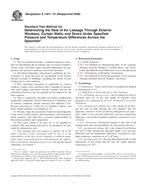
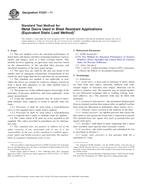 ASTM F2247-11
ASTM F2247-11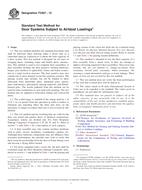 ASTM F2927-12
ASTM F2927-12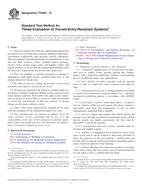 ASTM F3038-14
ASTM F3038-14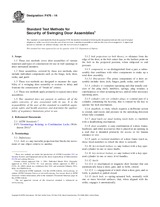 ASTM F476-14
ASTM F476-14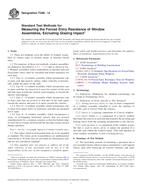 ASTM F588-14
ASTM F588-14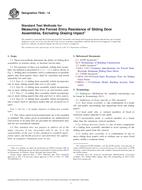 ASTM F842-14
ASTM F842-14
 Cookies
Cookies
